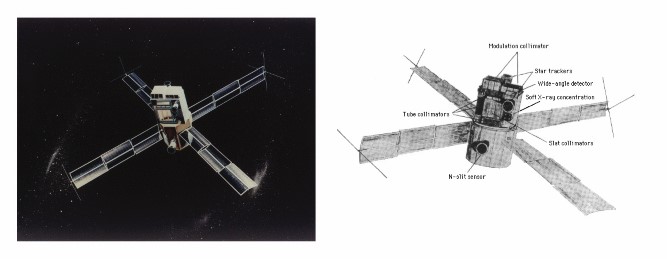After the discovery of Sco X-1, a major goal of the AS&E group was to create a satellite X-ray observatory that could observe for months or years instead of the few minutes of a rocket flight. To that end, Giacconi sent a proposal to NASA for an orbiting X-ray observatory. It was accepted, apparently only after much deliberation over whether to give support for such a large project to a small private company instead of a research university or giant aircraft company. The AS&E X-ray observatory was launched in 1970 as the First Small Astronomy Satellite, SAS 1, from a rocket base that has two converted oil-drilling platforms, San Marco for the rockets, and Santa Rosa for the launch control, anchored a mile off the coast of Kenya and operated by the Italian space agency. Giacconi named the observatory Uhuru (Swahili for “freedom”) in honor of Kenya. Its many discoveries established X-ray observations as an essential source of information about high-energy processes in the Universe. Together with the epochal discovery of Sco X-1, they were the basis for the award to Giacconi of the Nobel Prize in 2002 "for pioneering contributions to astrophysics, which have led to the discovery of cosmic X-ray sources.”
Third Small Astronomy Satellite (SAS-3): Designed and built at M.I.T, the SAS-3 was a spinning satellite. The spin rate was controlled by a gyroscope that could be commanded to stop rotation so that all instruments could be pointed at a given source. Pointing could provide about 30 minutes of continuous data on a source, such as a pulsar, burster, or transient. The image on the left is an artist’s conception of the satellite in orbit. The image on the right shows a diagram of the instruments onboard the SAS-3.
Credit: NASA
At M.I.T. our first satellite X-ray experiment was carried in the wheel section of the Seventh Orbiting Solar Observatory, OSO 7, which was launched in 1970. It yielded an all-sky survey in four energy bands from 1 to 60 keV. Our second was the M.I.T. X-ray Observatory on SAS-3. Our whole X-ray astronomy group collaborated in designing it to achieve a wide range of scientific objectives with a variety of detectors sensitive from 0.1 to 55 keV and able to measure source positions to better than 0.01 degree. During the pre-flight tests by the rocket and spacecraft engineers at the launch base in Kenya in 1975, I rented a small car and drove with Professor Rossi and his wife on a safari through the Serengeti game reserve. Then I took my position with earphones in the bowels of Santa Rosa, and waited for our project scientist to tell me that I could say “yes” when asked by the flight director if M.I.T. was ready. I said “yes”, and the rocket was fired, watched in awe by my colleagues, but alas not by me. The M.I.T. observatory operated for four years until dragged down by atmospheric friction to crash in the Pacific Ocean.


